For Latinos, Grandma's Gold Rings Aren't Just an Aesthetic—They're a Culture


For those in the culture, "Y el novio?” ("And the boyfriend?”) is a question we get far too often. At family reunions, holidays, and gossip sessions with aunts and uncles, you’ll probably hear the prying question asked once or twice, especially if you’re a single woman over the age of 21. Laura Acosta, 26, is aware that the answer to it, frankly, is the final boss to beat when it comes to an ever-growing jewelry collection. Encased in a safe behind her grandmother’s walls in Hialeah, Florida, is a gold cigar-style diamond ring, which is Acosta’s to claim as her own once she gets married.
"Ever since I started dating my boyfriend, she keeps bringing it up. It’s technically an engagement ring, but she did buy it for herself during her last marriage. She’s very Elizabeth Taylor. She’s been married five times,” explains Acosta, a Miami-based writer with Cuban roots. "I guess what [her husband] got her was too small for her, so she got something a little bigger. When he passed, she locked it up in the safe and said the first granddaughter to marry gets it. That seems like it’s gonna be me.” She’s tried the ring on a few times, she admits, and it eerily fits, something she takes as a sign from the powers that be.
Just like caldo recipes written on yellowing note cards and oral histories about our ancestors, Latinos pass down heirlooms as a way to keep our culture alive. Traditional heirlooms like gold rosaries, birthing quilts, wedding-day silverware, and tarnished silver rings feel akin to something you’d spot at a Brooklyn flea market, but to Latinos, they’re inherently more valuable than four-figure watches and vintage designer handbags passed down from generation to generation. While our homegrown heirlooms hailing from the Caribbean Islands, Central America, and South America might not resell for much on the secondhand market, their rich sentimental value and history seeped in generational struggle and strife surrounding the immigrant experience makes them feel priceless.
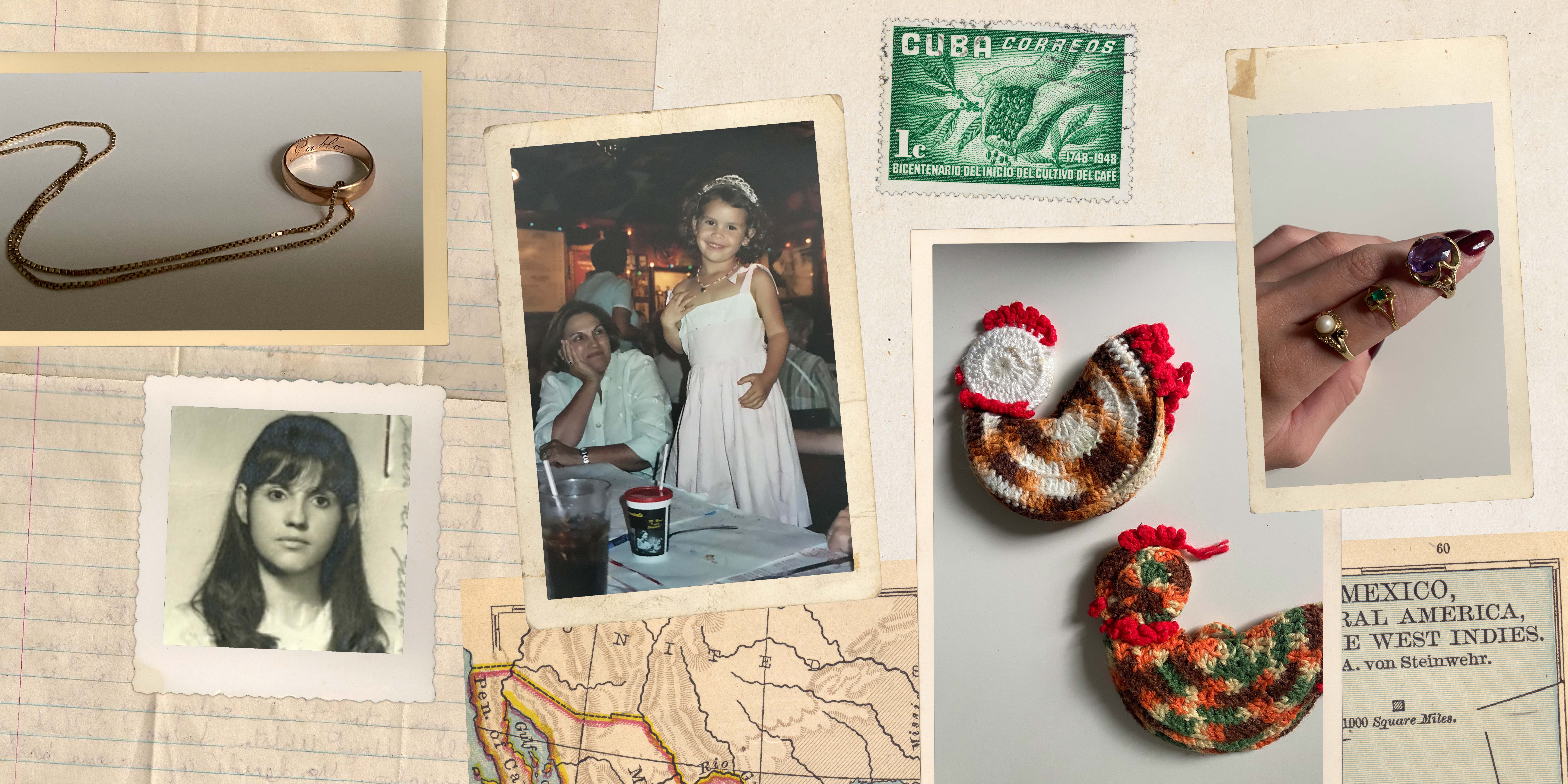
When Sofia Harmon, 23, got her first set of pearls from her Cuban maternal grandmother 10 years ago, it was wrapped in a bow and generational trauma. With the jewelry came a serious, long-winded talk about how the necklace was smuggled out of Cuba in the ’60s post communist revolution. Her grandmother, a child at the time, wasn’t allowed to take any possessions not on her body when she was shipped to the United States on the infamous Pedro Pan planes. The pearl necklace Harmon wears every day almost didn’t make the cut, and neither did her most prized possession: her great-great-great-grandmother’s wedding band dating back to 1900, which Harmon received on her college graduation day.
Another one of Harmon’s can’t-let-go-of family heirlooms is handmade pot holders that resemble chickens. They were first passed down to her mother from her grandmother and then to Harmon. Unlike her Cuban side, her paternal grandparents ("American through and through”) don’t have hen-shaped vases Harmon can pass down when the time comes.
"I have a few rings from my grandmother on my dad’s side, and I love them. They’re beautiful, but as far as the weight of them goes, it’s hard to even compare,” Harmon explains. "Even though some have similar stories, given as anniversary presents and whatnot, it was just that. … On the other side, just to have this around, it took so much. To keep it and bring it over and … start from scratch with no family [in a new country] and nothing to your name and to have all of this jewelry and to hold onto it and not sell it, it’s so special.”
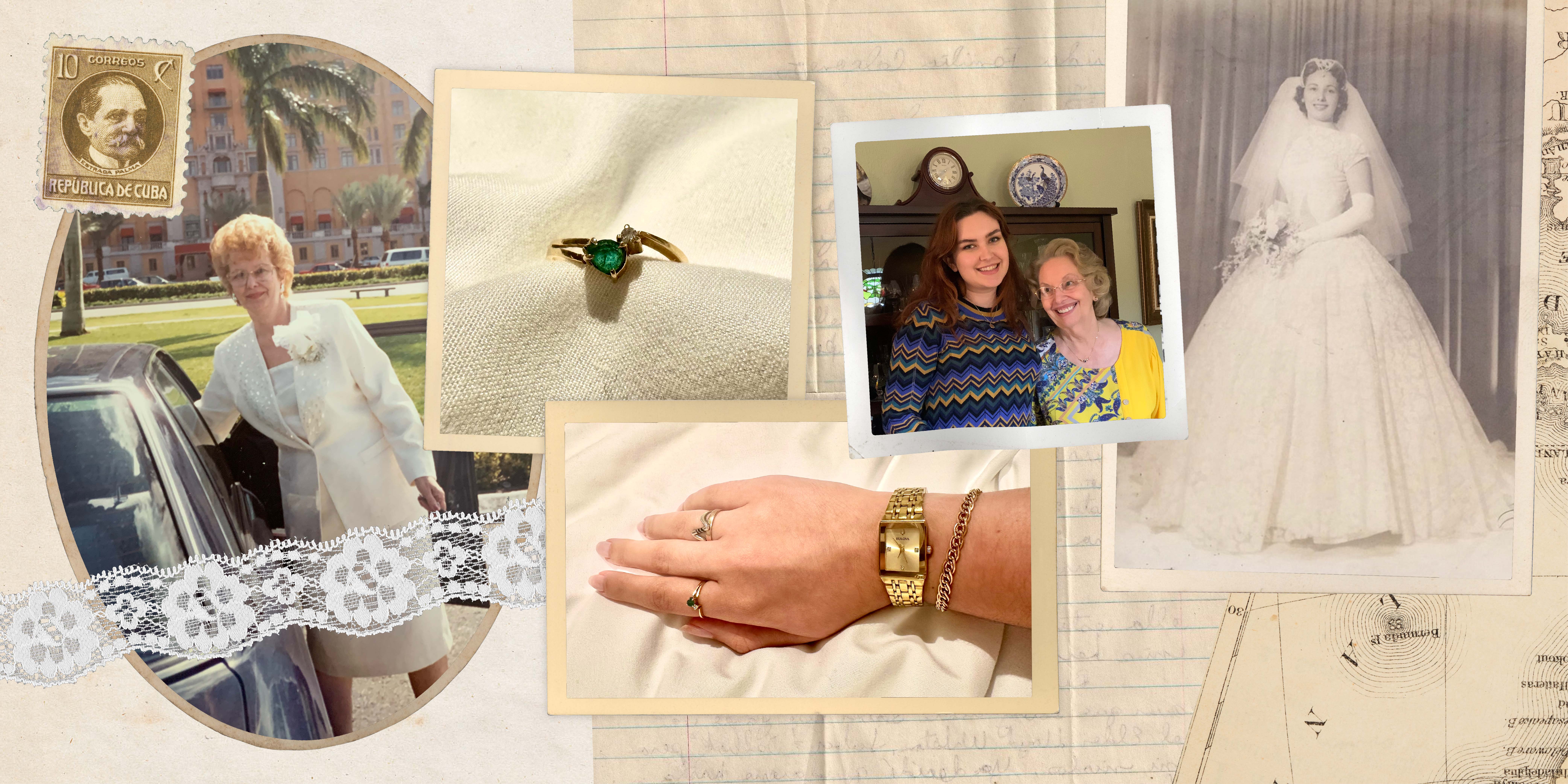
While family heirlooms, regardless of culture, are deeply rooted in emotional value, there’s a special link between items passed down from generation to generation in Latino families. Nearly everyone interviewed spoke about how the items they have weren’t even supposed to be here in the first place—the majority were smuggled into the country or earned through years of struggle and sacrifice.
"For Latino immigrants, a lot of them had to leave everything behind. When they got to the U.S., they felt this need to create these heirlooms again. I think my grandmother felt this anxiety to make sure those things being passed down were gold, gems, things that don’t lose their value,” Acosta explains, alluding to the Elizabeth Taylor esque cigar band with her name on it. While you can blame capitalism (Acosta jokingly does), it’s more than that. When you live for decades in survival mode, get stripped of everything you have, and finally get access to reclaim them in a new way, it’s a no-brainer that there’s an inherent underlying desire to make up for lost time, buy all the things, and start anew.
"My great-great-grandmother ran a hotel in Havana, so she had a lot of the things she could sell on the black market that could have been heirlooms—like fancy linen and silverware—if they hadn’t been traded for, like, cans of Russian meat so they could survive,” she says. "My grandma comes to the United States and thinks, ‘I’m gonna get those things again. I need to convert money not into stocks or bonds but into diamonds or gold.’”
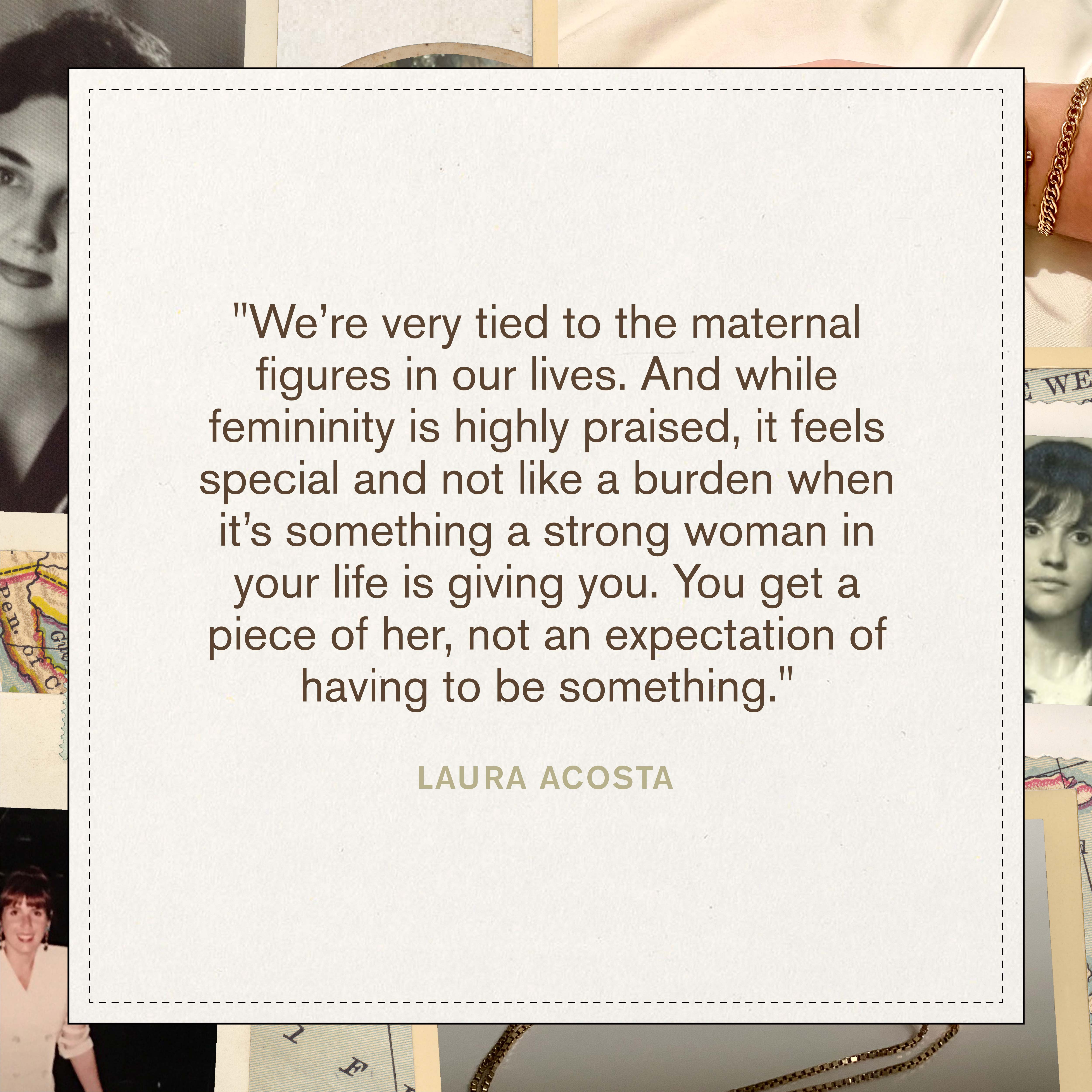
For Mexican-born stylist Rebeca Flores, connecting with her family’s heirlooms includes actually living in them. While some people can take an expensive necklace or lace tablecloth out only for special occasions, the dresses and jackets she’s been given have all been repurposed, whether it’s by altering them to fit her lifestyle or reimagining them altogether Her mother’s flamenco dresses now have a second life as curtains in the apartment she shares with her photographer boyfriend, often making an appearance in photo shoots.
To the 29-year-old Mexican and Salvadorian, there’s no use in keeping emotional, sentimental things if they aren’t going to be repurposed in their own way. In her words, "I don’t want to be cosplaying my grandma, you know? I want to be wearing my clothes. It’s like, thank you for this honor, but it’s not going to be the same vibe. It can’t be.”
As she’s a stylist constantly handling luxury samples worth thousands of dollars, Flores’s relationship with passed-down clothing might be more laissez-faire than some: "Things are meant to be used, and things are meant to be worn, and they’re supposed to rip and break, and the best thing I can do is wear them as much as possible instead of having them sit in my closet doing nothing.” In her eyes, knowing where things come from and the sacrifices it took to get them is more important than the physical object. She regretfully tells me she threw away her mom’s old ’80s-era Luis Miguel fan-club T-shirts when she was a teenager, thinking they were lame and tacky. "It would have been so fun [to wear now],” she adds.
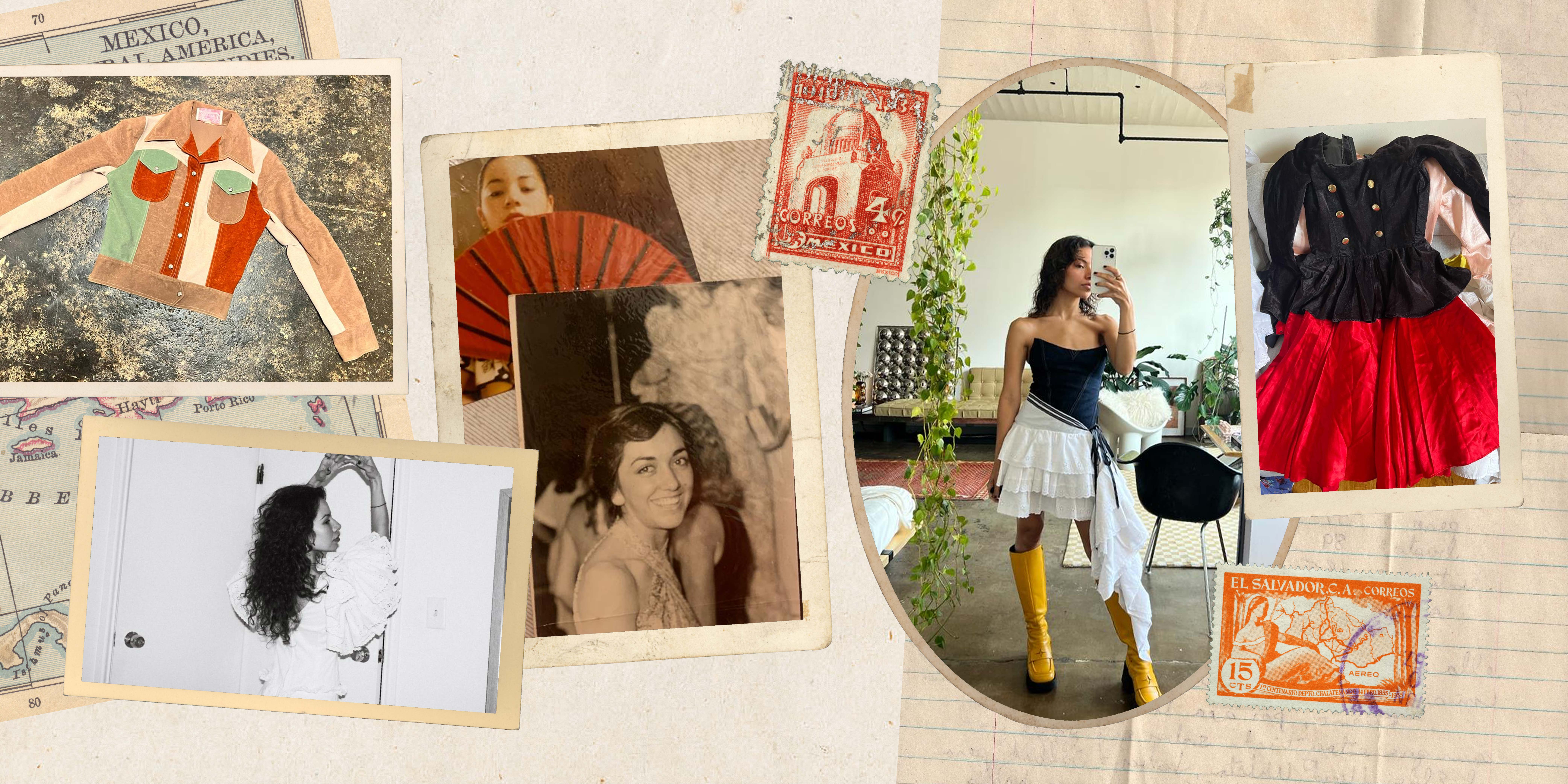
"In a lot of Latino communities, the things that we get seem almost like trash to you when you’re growing up. It’s like, ‘No, tía, I do not value you having a Crock-Pot. I don’t get it.’ But then you grow up and realize how much harder your grandparents had to work to be able to afford something ‘meaningless’ like that,” Flores explains. "There are so many things that we have that don’t seem like they’re valuable because they don’t have the ‘aesthetic’ of being valuable. They’re not gold-plated, there are no jewels on it, but it still holds value.”
For some, the promise of heirlooms and keeping a family tradition alive informs their work. While Flores lives through her mother by styling her vintage flamenco dresses, knitwear designer Caitlin Farradas has created something of her own. The L.A.-based first-generation Cuban American explains that her love of design comes from her outlandish, over-the-top, stylish great-aunt—a 93-year-old former seamstress who made dresses in Little Havana, Miami, for Farradas’s mother growing up and, later, Farradas herself.
In the midst of getting ready for her first day at an arts and design high school, Farradas asked to borrow her mother’s crochet dress that her great-aunt passed down—a cream-colored mini she’d sourced on a trip to Mexico. Two generations later, the same dress inspired Farradas to launch a collection of colorful knitwear pieces for her school project, which eventually grew into a full-size indie brand—Farradas Knits—that has dressed It girls like SZA and Rico Nasty. The rest, she says, is history.
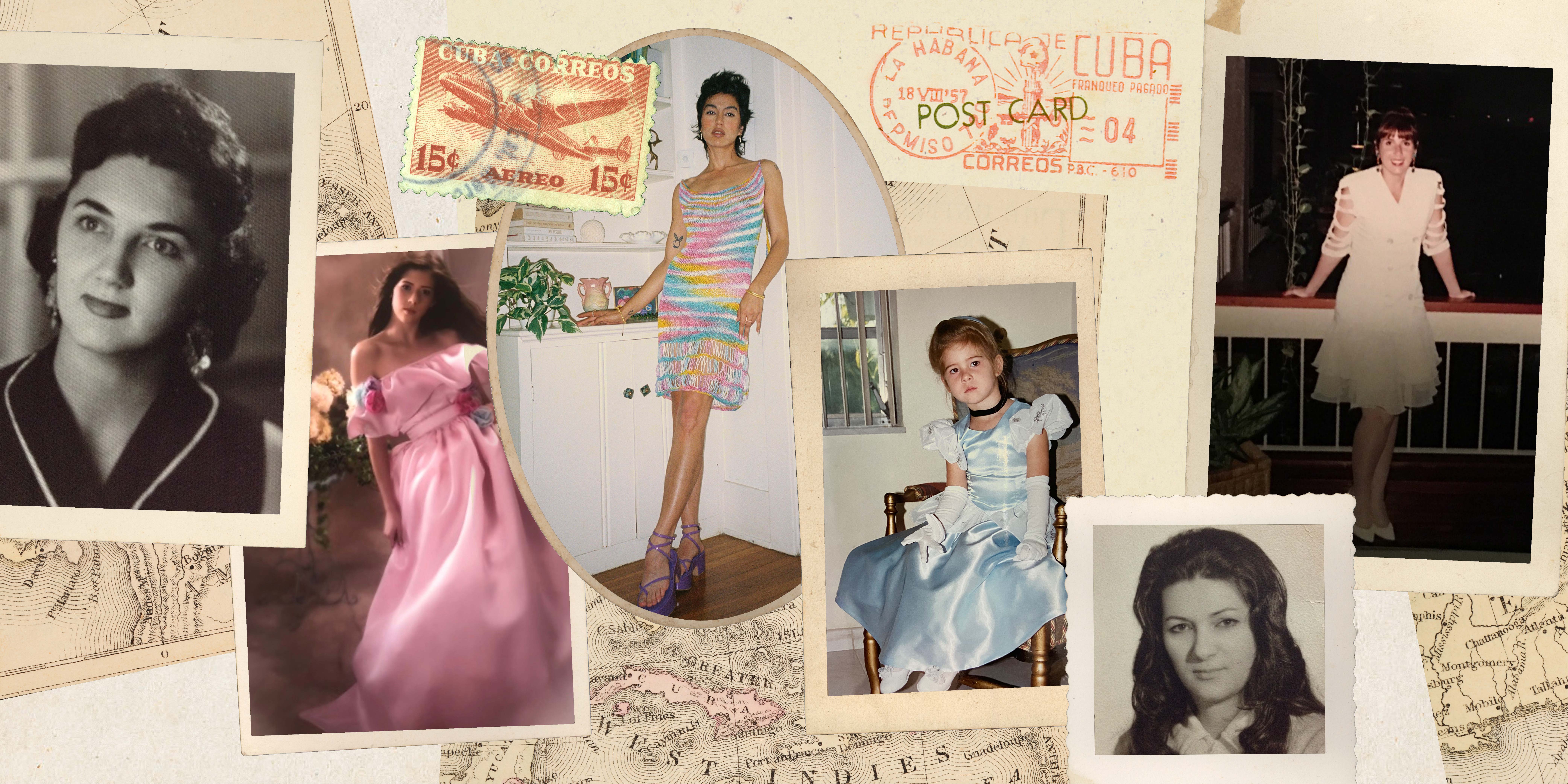
"That love for this dress doesn’t just inspire my career. It’s who I am as a person. It sounds crazy, but my great-grandmother had a dress shop in Cuba. It’s all interconnected. When we have these stories of heirlooms and struggle, I feel like people tend to remove any sort of passion that comes along with it. Just because someone is struggling doesn’t mean they don’t love what they’re doing,” Farradas explains. "Those stories are beautiful in their own right.”
With Farradas’s impressive body of work stemming from a Galliano-obsessed tía-abuela, the rich history of the things she owns and where they came from inform nearly everything she does. It isn’t just enough to make pretty clothing, she says. It’s about creating these one-of-a-kind pieces she hopes are passed down in her clients’ families, just like they were to her.
"Nowadays, it feels like fashion and heirlooms have no feeling of sentiment. So many things being passed down are simply within families because of their investment value, and that removes so much of the warm, fuzzy feeling you get with these Latino heirlooms,” she explains, sending me photos of the great-aunt who started it all, with a big smile on her face. "It’s a blessing to feel like, ‘Wow, I get to do this, too, for someone else.’ I don’t take that for granted at all.”
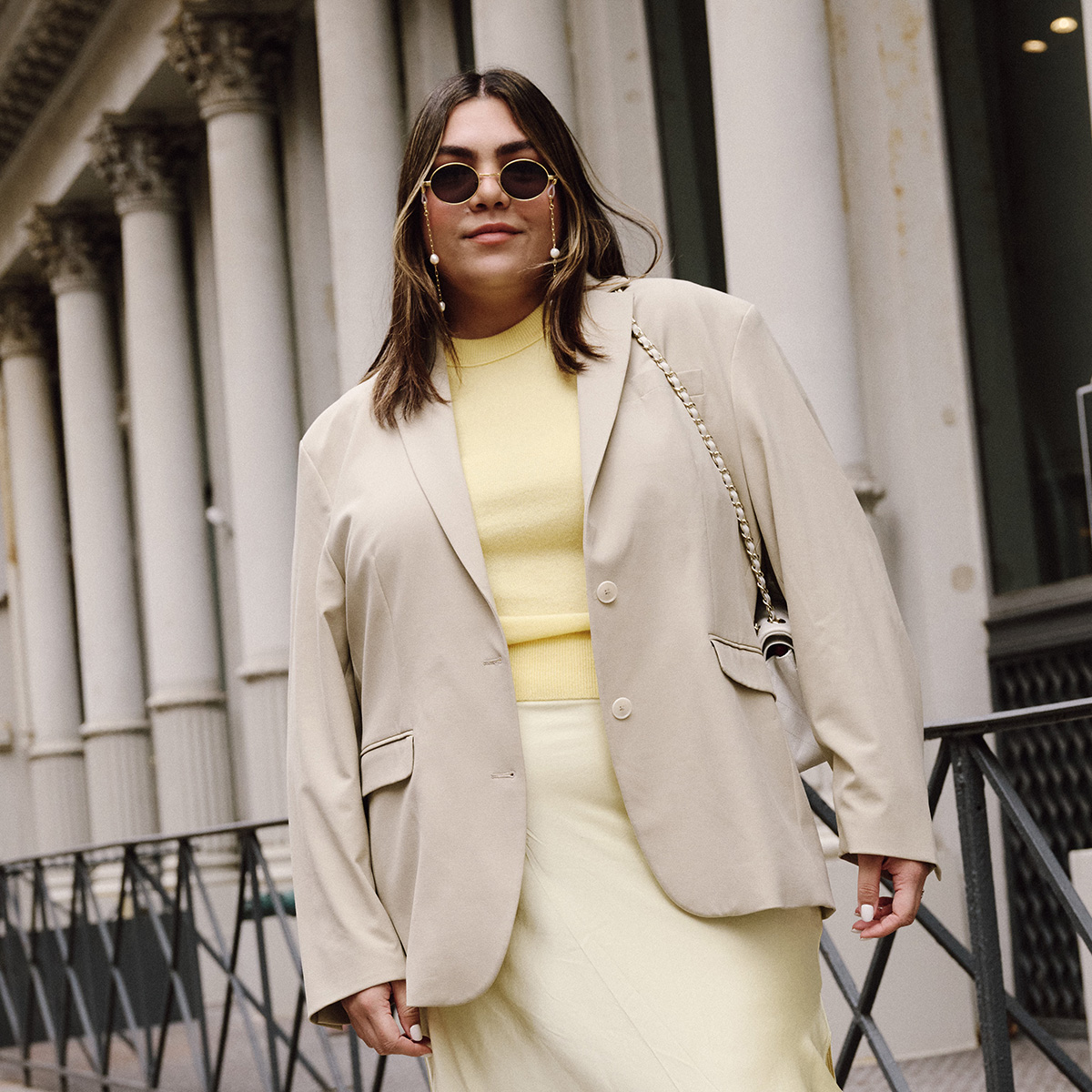
Ana Escalante is an award-winning journalist and Gen Z editor known for her sharp takes on fashion and culture. She’s covered everything from Copenhagen Fashion Week to Roe v. Wade protests as the Editorial Assistant at Glamour after earning her journalism degree at the University of Florida in 2021. At Who What Wear, Ana mixes wit with unapologetic commentary in long-form fashion and beauty content, creating pieces that resonate with a digital-first generation. If it’s smart, snarky, and unexpected, chances are her name’s on it.